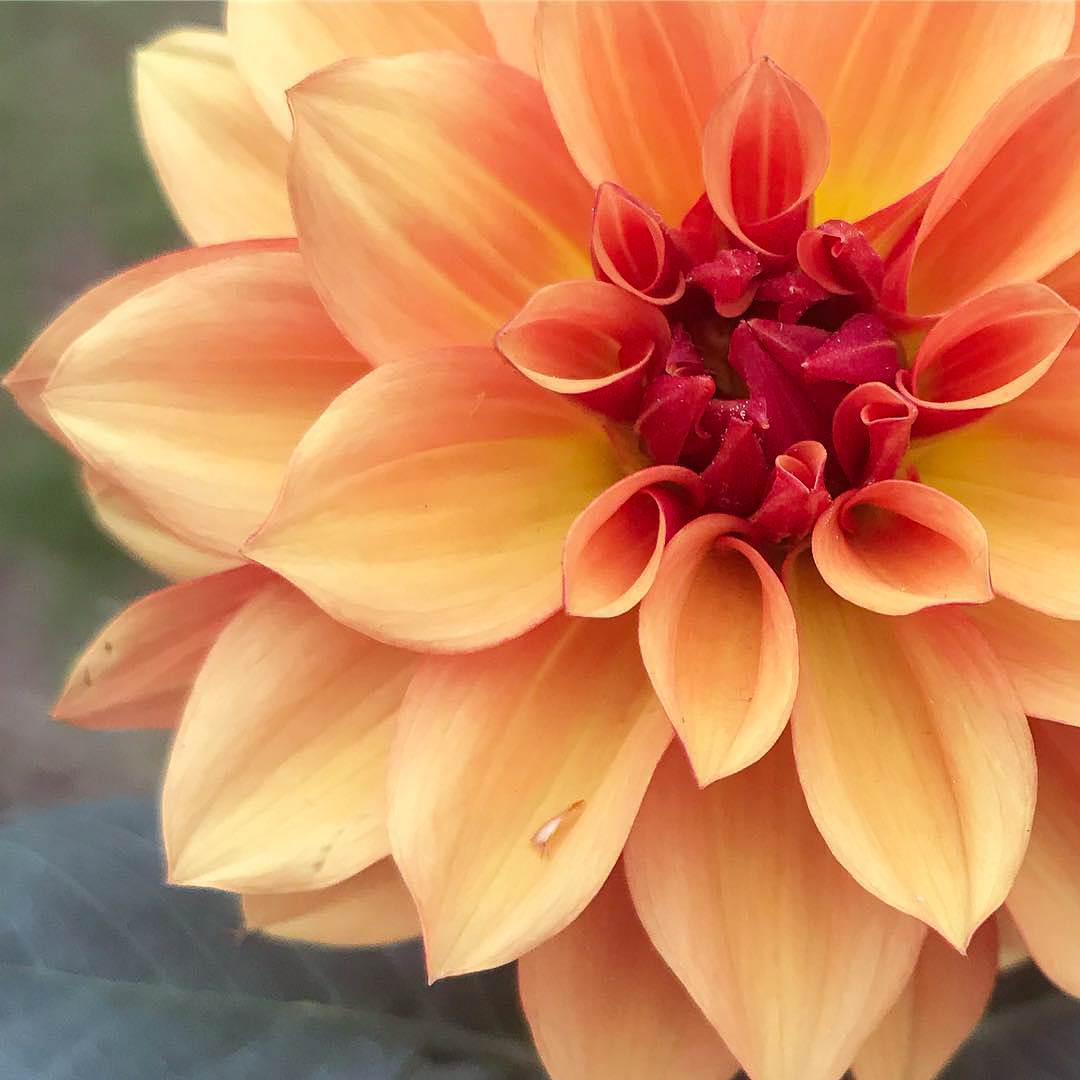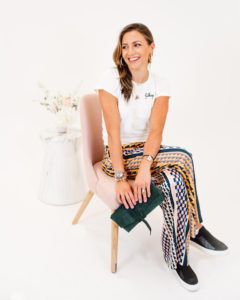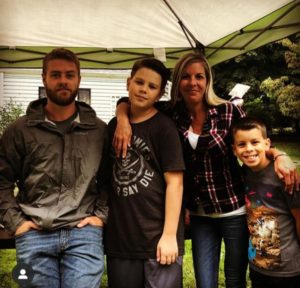Please note that there are two separate authors, each with a different narrative. On your phone or a similar device they will appear one essay after the other. On your computer you can read them side by side.
Imagine going in for surgery and waking up paralyzed from the waist down. That was my reality July 18, 2018, and it is still my reality in many ways. While I’ve made MUCH progress post-surgery, I am a very different Taylor than I was prior to my spinal AVM resection…at least physically…at least for now.
Unlike many other AVM survivors, my AVM did not hemorrhage. It was intricately removed in a 15.5 hour neurovascular surgery at UCSF. Nothing will ever erase the memories I have of waking up in the Neuro ICU after my surgery. I was oddly at peace, even though I was well aware I was paralyzed. I suppose it was my naivety. Maybe it was my can do attitude I’ve always had. I knew I’d beat “this”…whatever “this” was. After all, my surgeon had told me at least 3 times post-surgery, “you will be walking in 6-12 months.” Six months sounded like a LIFETIME, and yet here we are 24 months later. But I’ve never given up and will continue to charge forward no matter what.
While I am not walking yet, I have made great progress. I am able to walk using a walker, but I rely on my wheelchair 90% of the time. I vividly remember neuro residents coming into my room post-surgery picking and prodding at my legs and feet. “Can you feel this now Taylor?”, “Okay Taylor, now move your toes.” I would get nauseous every time a white coat came into the room. It was a slap in my face each time they came in and did the same drill. My legs didn’t move, my feet didn’t move, my toes didn’t move. BUT the surgery was considered medically a success. The spinal AVM was resected, and I didn’t need a fusion post 5 vertebrae laminectomy. Part of my AVM was growing intramedullary, meaning it was actually embedded into my spinal cord. My surgeon was able to nip that part of the AVM in the bud. An artery clamp was then attached to the end of the AVM so that it lost blood supply and has no chance at growing back. We will never really know how bad it would have been if my AVM would have hemorrhaged.
I was shipped home in an ambulance from UCSF after 9 days in the ICU. I was headed to an in-patient rehab facility in Fresno. As a child, I’d always wondered what it would be like to ride in an ambulance. I would tell tiny Taylor now, “You’re not missing anything, kid.” I was in disbelief as I was transferred atop a stiff gurney into the ambulance. I’d just undergone one of the most complex and painful spinal surgeries and now I was being manhandled by two EMTs. I was terrified to leave my wonderful neuro ICU nurses and their constant care and attention. “Would other people be able to take care of me? Would I ever be able to take care of myself?” It makes me tear up thinking about how hard that was. But the time had come, UCSF couldn’t do any more for me. It was my turn to put in the work; it was my time to heal. That perspective has taken me really far throughout this entire journey. I look at my tragic surgery as a lifesaving event. All this hardship is healing as ironic as that sounds. I’ve come to learn that adversity and personal growth can coexist.
My next destination was Leon S. Peters in Fresno, CA. This in-patient rehab facility would be my home for the next 17 days. Here I would learn how to navigate life in a wheelchair, for now…I spent one hour a day in physical therapy, one hour in occupational therapy, one hour in speech therapy and one hour in upper body strength training. I had to wake up each morning and give myself a pep talk. I’d honestly never felt so lonely in my life. It was no fault of my husband, friends or family. They were ALL there for me. It was just impossible for anyone to understand how I was feeling physically and emotionally. I never want to feel that way again. To everyone out there going through a rough time, know that it does get better. Take it day by day. At first I resented my therapists and therapy. It was a hard pill to swallow that a LOT of my independence was stripped away from me overnight. But I was going to have to embrace this change. I was going to have to suck it up and respect my therapists and therapies.
Up until then, I’d really never had a surgery or underwent anesthesia. While I was at UCSF, I underwent a total of twenty-four hours of anesthesia between my spinal AVM resection and two angiograms. That’s a LOT of anesthesia and while it was very necessary, it took a toll on my body and brain cognition. At first, I refused to acknowledge the fact, but the signs were right in front of me. I couldn’t draw an analog clock, I couldn’t follow tasks, I forgot things all the time and even when I could remember to do something as simple as wake up to get ready for the day, my body was so wrecked that it was near impossible. But in those seventeen days, I got stronger. And then again, it was time to make another move. It was time for me to go home. This was going to be an adjustment not only for myself but for my husband as well. We were going to have to navigate this together…in sickness and in health.
We’d done the standard modifications to our home so that it was handicap friendly like taking the bed off the bed frame, put a shower chair in our shower, taking the couch off its risers…but even still, nothing came easy. I would have to wake my husband Matt up throughout the night to help me use the restroom or even just move me. My back was structurally sound and my incision was healing beautifully, but I still felt so fragile. It took a village my first year post surgery. My brother moved in with us for a while and turned our guest bedroom into a PT room. He’d work with me during the day while Matt was at work. Matt still came home throughout the day to help me bathe or use the restroom. EVERYTHING was difficult.
Eventually, I started outpatient PT at San Joaquin Valley Rehab. With each session, I gained more strength, which meant I gained more hope and a little more independence. My Dad, Matt and other family members would rotate taking me to and fro. I am so grateful to all of them for taking time out of their busy days to make sure I never missed a session. There came a time where I got the boot from my therapist. My insurance would no longer cover the cost of my therapy sessions because I hadn’t progressed enough. Another slap in the face. But I knew there was much more progressing to be done. I would just have to find a new place to host my healing and progressing.
Navigating the healing journey is a full time job. I truly believe there is opportunity in each day to heal, it’s a matter of finding the right therapies and the right people to help facilitate them. You cannot throw in the towel.
About three months’ post-surgery, I started experiencing what we believed was “regenerating nerve” pain. The pain started off with burning, but it was kind of exciting. I’d been told that this is what “nerve regeneration” felt like. I could handle ANYTHING so long as it was my body healing. But it progressively got worse, to the point where I was pretty much bed ridden unless I was at therapy. The pain was so deep that I often thought I would pass out. To give you an idea of what the pain felt like, imagine your legs are Slim Jim’s that have been dunked in lava, then coated in lead and then electrocuted in the knees, ankles and toes. The toes were another story, my left big toe more specifically. Ole lefty often felt like it’d been blown up by a grenade. It was AWFUL. A neurosurgeon at UCSF eventually diagnosed me with CRPS, Complex Regional Pain Syndrome. CRPS is ranked as the most painful form of chronic pain that exists today and is ranked on the McGILL Pain Index at a whopping 42. I refused to live with this pain, so yet again…more navigating.
Traditional Western Medicine will tell you that there is no cure for CRPS and the only thing that can be done to help alleviate some of this pain is to implant a spinal cord stimulator (SCS). This would mean I would have to undergo another laminectomy and there is no real guarantee that the procedure would work…no thanks. After hunting and searching for other options, I came across a clinic in Fayetteville, AR that specializes in putting CRPS into remission. Matt and I had a virtual meeting with the doctor who runs the Spero Clinic and after reading her book, Putting Out the Fire, we decided that I would give it a go. It would be a giant leap of faith, a sacrifice on many levels. I would mean leaving Matt and our pups for three months, minimum. It would mean my mom would transfer her job to Fayetteville (something I am forever grateful to Lululemon and my mom for doing). And it would mean that we’d actually push my stay out to SEVEN months. Looking back, it was 100% worth it. I’m proud to report that MUCH of my pain is gone AND the clinic was able to help me progress with my paralysis.
I’ve been home in CA from the Spero Clinic for a month now, and you guessed it, there’s more navigating to be done. I’ve got a GREAT program setup for myself which requires discipline, consistency and the help of family and friends. I’m careful to not be so hard on myself--after all I’m running in a marathon with many treacherous hills; this isn’t just a sprint. There will be many chapters in my book of life, and I know I’m going to look back at several of these hard ones and smile with pride. To anyone out there about to give up…don’t. You might have taken a wrong turn or ended up at what you think is the end of the road. If that’s truly the case, make a U-turn; there’s always an alternative route and there’s always beautiful scenery to be seen along the way. Trust the process, keep the faith.
-Taylor Gilkey Laird
Time to go home:
Six weeks post rupture and after a ton of cognitive and physical inpatient therapy, it was time to go home, although I had no idea where my home was or what it looked like. The ride home was terrifying. The bright sunlight, the noise from traffic, the motion, all gave me a ton of anxiety. I still have anxiety when I'm in the car, whether as a driver or as a passenger.
Walking into my house I started to remember things, but I looked at them very differently as if everything was new. Readjusting was hard. I wasn't in physical pain, but my body was weak and my head was foggy. I wanted to cook and clean like I was supposed to, but it was hard to remember the steps of doing normal, everyday mom and housewife things. I felt overwhelmed, often bugged out and laid back down on the couch feeling sorry for myself for not being enough for my family. The less I did, the lesser I felt about myself.
As I started to acclimate to my "new" life, my friends and family had to as well. The problem was, and still is, that I am different. Not everyone in my life researched the effects of an aneurysm rupture or what my recovery might look like. While I continue to do as much research as possible into why it happened and what's going on in my new brain, only my immediate family knows the emotional and irrational things happening inside of it. Not by choice; they just live here with the new me. The smallest things set me off. I'd like to say I'm getting better at keeping my cool, but it's sometimes really, really hard. Every day is a new day and everything is new all over again. Every. Single. Day. Is. Coming. Home.
Oh, but there’s also my love/hate relationship with outpatient rehab. Still unable to drive, I had to depend on my very reliable, awesome boyfriend to bring me, wait with me and come into hours of sessions with me. While I didn't need any physical rehabilitation, my cognitive skills were poor. I often forgot words and mixed up sentences or forgot mid-sentence what I was talking about. (This still happens quite often. Only now I blame it on my age and not my brain...because I earned it and, well, because I can.) I often got frustrated in my sessions because I knew that I understood the things she was asking me to do or perform, but it took a lot of time and a lot of staring at words to have them start to make sense. And sometimes I just didn't understand it at all, but I always tried my best. Frustratingly I tried.
Now I'm home for good (God willing) with no real hope of returning to the career I loved, that I thrived at. My memory is still short lived, my patience is very thin, and I need directions written down in order to remember what I'm supposed to do, even with simple things like taking a shower. When I was leaving the hospital, I was determined to go back to work. But as the months rolled on and my brain is still not always clear, I'm resigned to the fact that I may never work again. It's not an easy thing to grasp. I've always had great jobs and loved having the equally great paycheck. For now though, I'm just happy to say I’m one of the lucky ones that made it home, to wake up every morning and spend lots of time with my family.
********
Another home:
I have every hope to continue writing articles for TAAF, the foundation that has been our family's rock. Of all the aneurysm/AVM foundations I speak to daily, TAAF has been overwhelmingly supportive. While these organizations are not the communities I ever wanted or asked to be a part of, I now can't picture my life without them.
-Stacey Gil
Editor’s Note
After... a tiny word that often holds the gargantuan weight of hope and the fear of anticipation. It literally implies that there was a before, but cannot be bothered to explain itself, cannot share if we were better off then or now.
When we first considered the idea of two survivors writing together, we could not have imagined that they would be such giving, soul-searching authors. The deeply feeling Stacey and the intensely focused Taylor--an aneurysm and AVM survivor each--did not feel like the most obvious partners. I worried. What if the process wasn’t fun? Or worse; what if they hated it? This nervous energy was a big part of my before. Writing now in the after, in the time past the Zoom calls and the emails, I can easily say that these two authors are still very different, but they are also fabulously telling sides of the same coin.
Coming home, dealing with your “new normal” or the post-surgery world looks and feels different to each of us. Because we are so unique, so incredibly us, our after echoes that distinctiveness and you read that in each of their essays. What you can also clearly see is that their pain, love, hope and determination reverberate, these exponential ripples touching one another and sending back an explicit message of unity. They’re both surely saying that the after isn’t perfect, that it is sometimes more unexpected that we could have ever imagined, and that it is ALWAYS worth it. Both women are living in their after, just like so many of us, and they want us to see it for all that it is--a messy, beautiful, chaos. After is life, something neither Stacey nor Taylor were sure they’d see another day of, and consequently something they seize in it’s perfect imperfections at every turn.
~Dina Chon, Editor in Chief
Click the photos to learn more about writers,
Taylor Gilkey and Stacey Gil


